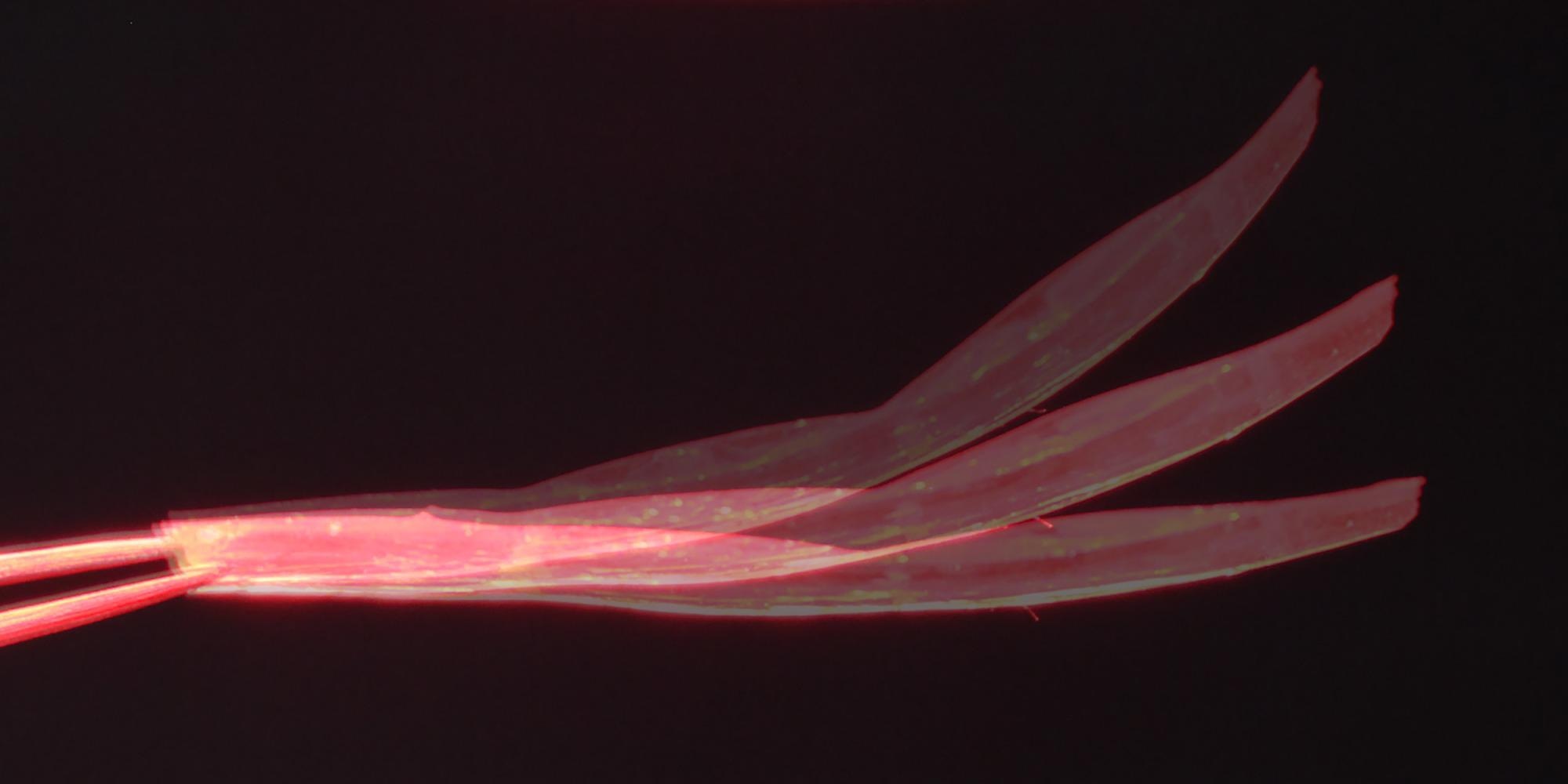Researchers at UC Riverside have developed a floating, robotic film that could be trained to absorb oil spills at sea or eliminate contaminants from drinking water. The robotic film, fueled by water and powered by light, could be used indefinitely to clean remote areas in which it would be difficult to recharge using other means.
 Superimposed images showing Neusbot’s bending process. Image Credit: Zheiwei Li/UCR.
Superimposed images showing Neusbot’s bending process. Image Credit: Zheiwei Li/UCR.
Our motivation was to make soft robots sustainable and able to adapt on their own to changes in the environment. If sunlight is used for power, this machine is sustainable, and won’t require additional energy sources. The film is also re-usable.
Zhiwei Li, Chemist, UC Riverside
The team has named the film Neusbot after neustons, a class of animals including water striders. Such insects traverse the water surface in slow-moving streams and lakes with a pulsing motion, quite similar to what the researchers have been able to achieve with the Neusbot, which can move on any type of water body.
Other research groups have developed films that can bend in response to light but have been unable to achieve the mechanical, adjustable oscillation realized by Neusbot. This kind of motion is crucial to controlling the robot and making it work anywhere and anytime.
A new paper published in the Science Robotics journal describes the technical details of this breakthrough.
There aren’t many methods to achieve this controllable movement using light. We solved the problem with a tri-layer film that behaves like a steam engine.
Zhiwei Li, Chemist, UC Riverside
The motion of early trains was powered by steam from boiling water. Neusbot is powered by a similar principle, but here, light is used as the power source. The film’s middle layer is porous and holds water as well as copper nanorods and iron oxide. The nanorods transform light energy into heat, vaporize the water and power the pulsed motion over the surface of the water.
The bottom layer of Neusbot is hydrophobic. This ensures that the film floats back to the surface even when overpowered by an ocean wave. Moreover, the nanomaterials can resist high salt concentrations without being damaged. “I’m confident about their stability in high salt situations,” added Li.
Li and Yadong Yin, a UCR chemistry professor, specialize in building robots using nanomaterials. They manipulated Neusbot’s direction by altering the angle of its light source. The robot is powered only by solar energy and would move forward easily. The use of an additional light source helped control where Neusbot swims and cleans.
The existing Neusbot version includes only three layers. The researchers intend to test future versions with an additional, fourth layer that could hoover oil or one that hoovers other chemicals.
Normally, people send ships to the scene of an oil spill to clean by hand. Neusbot could do this work like a robot vacuum, but on the water’s surface. We want to demonstrate these robots can do many things that previous versions have not achieved.
Zhiwei Li, Chemist, UC Riverside
The researchers also intend to try and more accurately manipulate its oscillation mode and proffer it with the ability to perform even more complex motion.
Journal Reference:
Li, Z., et al. (2021) Light-powered soft steam engines for self-adaptive oscillation and biomimetic swimming. Science Robotics. https://doi.org/10.1126/scirobotics.abi4523.